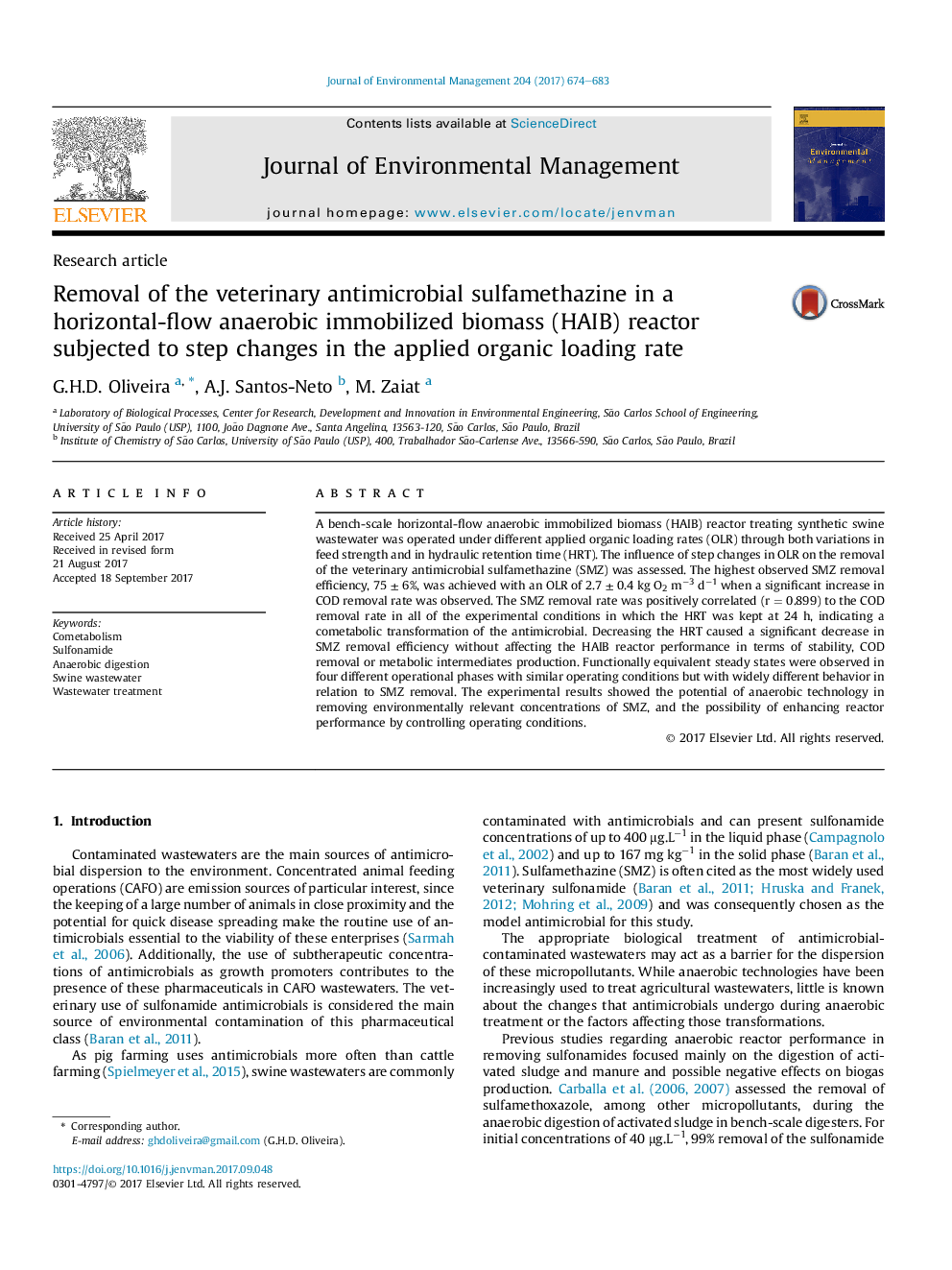| Article ID | Journal | Published Year | Pages | File Type |
|---|---|---|---|---|
| 5116304 | Journal of Environmental Management | 2017 | 10 Pages |
Abstract
A bench-scale horizontal-flow anaerobic immobilized biomass (HAIB) reactor treating synthetic swine wastewater was operated under different applied organic loading rates (OLR) through both variations in feed strength and in hydraulic retention time (HRT). The influence of step changes in OLR on the removal of the veterinary antimicrobial sulfamethazine (SMZ) was assessed. The highest observed SMZ removal efficiency, 75 ± 6%, was achieved with an OLR of 2.7 ± 0.4 kg O2 mâ3 dâ1 when a significant increase in COD removal rate was observed. The SMZ removal rate was positively correlated (r = 0.899) to the COD removal rate in all of the experimental conditions in which the HRT was kept at 24 h, indicating a cometabolic transformation of the antimicrobial. Decreasing the HRT caused a significant decrease in SMZ removal efficiency without affecting the HAIB reactor performance in terms of stability, COD removal or metabolic intermediates production. Functionally equivalent steady states were observed in four different operational phases with similar operating conditions but with widely different behavior in relation to SMZ removal. The experimental results showed the potential of anaerobic technology in removing environmentally relevant concentrations of SMZ, and the possibility of enhancing reactor performance by controlling operating conditions.
Related Topics
Physical Sciences and Engineering
Energy
Renewable Energy, Sustainability and the Environment
Authors
G.H.D. Oliveira, A.J. Santos-Neto, M. Zaiat,
